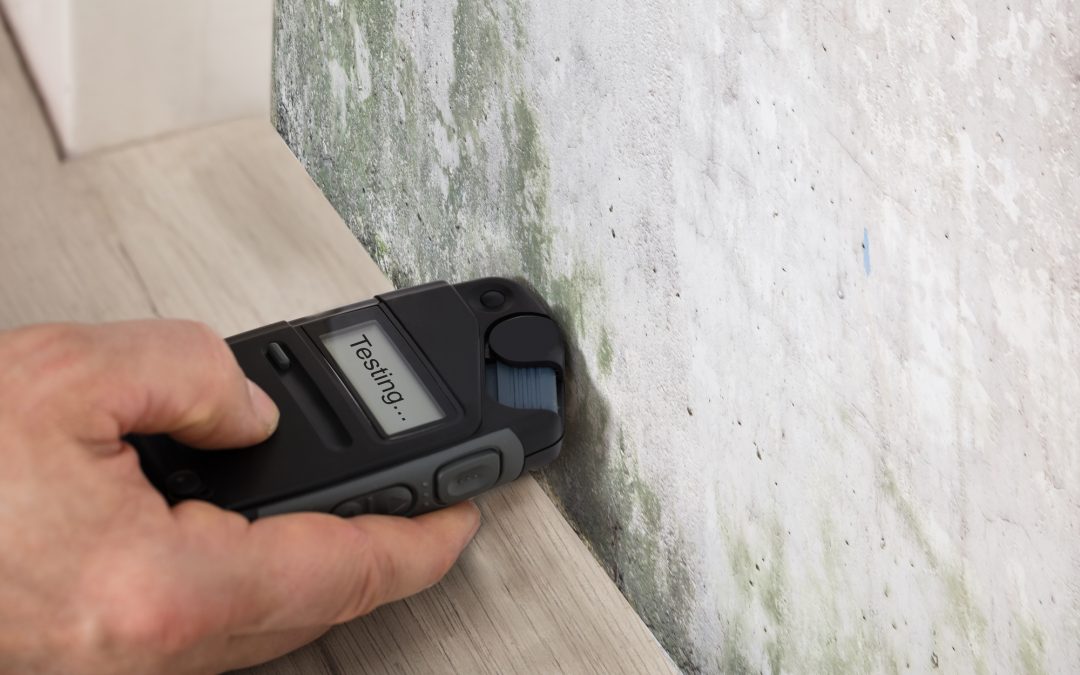If you’re a child under the age of 5, you have almost a 1 in 10 chance of dying from a disease exacerbated by outdoor and indoor air pollution. About 1 in 9 deaths around the world are due to indoor and outdoor air pollution.
Aren’t we told to stay indoors when the air quality is bad? Yes!
That only helps if the air quality within your home is safe. One of the compromising factors of indoor air quality is mold and the mycotoxins that come from some molds.
Mycotoxins are sometimes deadly.
How do you test for mold and mycotoxins in your home? Keep reading and we’ll give you the low-down on mold, mycotoxins, and how to test for mold in your home.
Mold and Fungi
There are well over one million different types of mold. When people talk about mold and mildew, they’re talking about visible fungal growth.
Light-colored, powdery spores are mildew, while fuzzy, colorful growth is mold. Mold is everywhere in our environment because it grows from tiny spores. These spores float throughout the air.
The spores land anywhere, but they grow well in moist environments, especially between 40-100 degrees Fahrenheit. That means that every damp area inside your home is the perfect breeding ground for mold.
That black stuff that grows in your shower between the tiles? That’s mold.
Mildew begins small and grows into large mold colonies. Do you have a wood deck outside? If there are green lines running throughout the boards, you’ve got mold.
Mycotoxins in Mold
Some fungi that grow into mold contain mycotoxins. Mycotoxins occur naturally and grow in some foods such as nuts, spices, and even cereal when the conditions are humid and warm. These toxins enter the food chain through infected crops and they’re a threat to human and animal health.
They’re especially dangerous if you’re allergic to the mycotoxin. Eating food infected with mycotoxins can cause anaphylactic shock and sudden death.
A notorious mold that produces mycotoxins is Stachybotrys chartarum (S. chartarum). S. chartarum causes serious health problems.
It’s also the mold most noted for “sick building syndrome.” This leads us to our next point…
Sick Building Syndrome
Buildings infested with S. chartarum and other molds and mycotoxins cause illness and, in some cases, even death. The most common symptoms of sick building syndrome include:
- Asthma
- Upper respiratory tract infections
- Chronic headaches
- Nausea
- General illness
A sick building doesn’t limit itself to places of business. Homes are also buildings and contain fungi, mold, mildew, and mycotoxins.
Signs of Mold Problems
Are you worried your home has a mold problem? Here are a few signs:
- Musty odors
- Water-related problems such as burst pipes or flooding
- Visible mold growth
- Chronic illness, especially respiratory problems, headaches, and nausea
Keeping the humidity level in your home low is key to reducing mold growth. Mold problems often follow after water damage such as flooding or burst pipes.
After flooding, testing for mold is important. This is especially true if you live in a humid area like Florida.
There are a few places you should check for mold. Below sinks, around windows, and under carpeting if it’s been wet.
If you’ve had any flooding, there’s a good chance you’ve got mold behind the drywall. Ventilation ducts are another place to look for mold.
Do you see an area that looks like dirt? Try swabbing a small amount of diluted bleach onto the area. If the area lightens or comes back repeatedly after cleaning, it’s probably mold.
Mold affects more than your health. It can also affect the structural integrity of your home.
Do you see an area of suspected mold? Probe it with a sharp tool such as a screwdriver. If the wood is soft or crumbling, it could be rot caused by fungi.
How Do You Test for Mold?
If you suspect a mold problem, a mold inspection is a good first step. The mold inspection process includes bringing in a professional to take a look.
There are several mold sampling tests the professional can do. The first step is a visual inspection so he can decide on the necessary tests. After the visual inspection, he’ll do one or more types of tests such as the following:
Whole House Air Sampling
Whole house air sampling tests the air you’re breathing inside the house. It includes using spore traps that collect pollen, mold spores, and other organic and inorganic matter. Professionals can also test between the walls for mold.
The professional uses a pump that pulls the air through the trap, collecting the matter. In the case of whole house air sampling, the pro collects at least three samples – two from inside and one from outside.
The outside sample is the baseline for comparing against the indoor samples. All the samples go to a lab, and results show the types and prevalence of mold in the home.
Carpet Sampling
Airborne mold and fungi spores settle into the carpet. Sampling the carpet offers a look into the types and levels of mold in the home. A pro collects the spores with a special vacuum.
Lift and Swab Sampling
Is the mold in your home visible? Is it growing on walls, cabinets, or doors? Lift or swab sampling works well in this case.
The mold professional uses a swab or special tape and lifts the sample off the surface. The sample goes into a container where it’s sealed and sent to the lab.
Is It Time to Test for Mold in Your Home?
Now you know the answer to the question, “How do you test for mold?” Is it time to test for mold in your home?
If you suspect mold, don’t wait. Mold is a significant health hazard and can also compromise the structural integrity of your home. Don’t wait until you and your loved ones are sick to test for mold.
If you’ve got a mold problem, we can help determine the scope and severity and offer solutions. Give us a call today!

